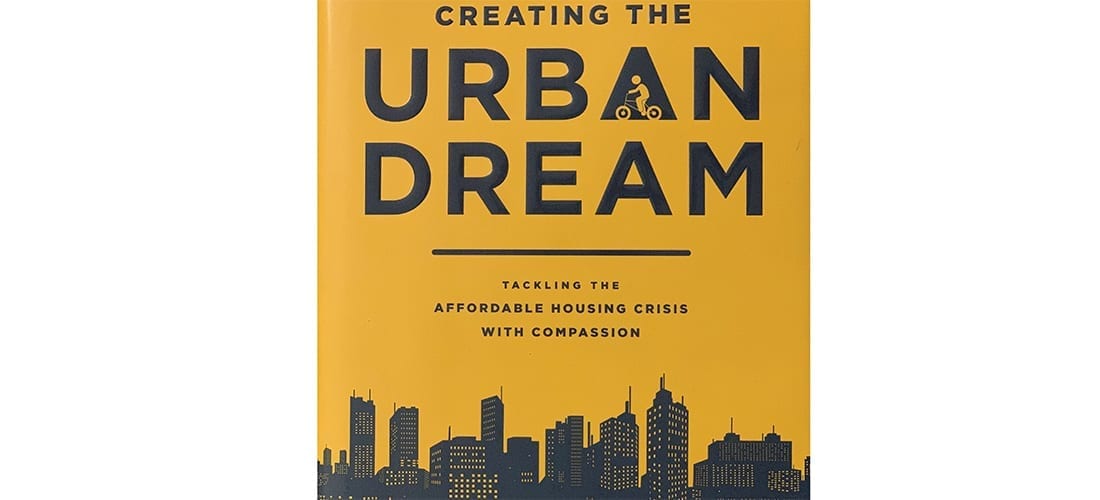Bringing the point home
August 3, 2020

Charlotte developer Clay Grubb’s new book aims to spark engagement surrounding the affordable-housing crisis.
by David Mildenberg
The developers who have built Charlotte have generally stayed in the shadows, preferring to rely on lawyers and consultants to push projects through zoning and regulatory hoops. Clay Grubb takes a different approach. Earlier this year, he set off fireworks by proposing an affordable-housing apartment project in the gentrifying Seversville neighborhood near downtown that would offer modest rents by not including a parking deck — and block renters from owning cars to encourage walking, biking and mass transit.
At a city meeting discussing the project, Councilman Braxton Winston, a progressive Democrat, responded, “that is a very, very dangerous place to be — it’s potentially inequitable.” The project is pending.

Unconventional outspokenness is Grubb’s style, so it’s no surprise that the UNC Chapel Hill law-school graduate has written a lively book about his career and family business, with a focus on fixing the affordable-housing crisis. Creating the Urban Dream, published by ForbesBooks, emphasizes the importance of real-estate ownership in generating wealth, citing racist policies that inhibited many African Americans from benefiting as property values soared in many neighborhoods in Charlotte and North Carolina.
Grubb understands white privilege, having grown up in a prominent Lexington family that owned lots of property in Rowan and Davidson counties. He attended Virginia Episcopal School and Tulane University before earning his law degree. His father, Robert, was a tax attorney who started a housing business in 1963. Unusual for the time, the Grubbs made mortgage loans to residents of redlined neighborhoods who had no other access to credit, often charging the same interest rate as their borrowing costs.
As president of the family business since 2002, Clay has expanded into about a dozen cities stretching from Richmond, Va., to Atlanta, raising capital from wealthy individuals and large institutional investors. In Charlotte, his signature developments have included the upscale Ratcliffe condos and SkyHouse Uptown apartments; The Shops at Morrison near SouthPark; and the Latta Pavilion mixed-use project in Dilworth. His brother, Gordon, has also enjoyed success by focusing his own real-estate company on projects in Raleigh.
Grubb’s analysis defies simple characterizations. While a progressive on many issues, the book is full of libertarian-type criticisms of government bureaucracy. He quotes John Huson, whose Carocon is the Queen City’s biggest multifamily-housing builder, that “The most affordable housing I build is market-rate housing; the least affordable housing I build is what they call affordable housing.” Unreasonable government regulations enforced by well-meaning officials routinely boosts housing costs by as much as 30%, Huson and Grubb say. Building an “affordable” apartment development in many U.S. cities now costs about $250,000 per unit.
Such issues may be distant for those for whom homeownership was never a serious challenge. The housing shortage is real, however. Fewer homes were built in the U.S. in any year in the last decade than during every single year between 1968 and 2007, with the exception of one year, Grubb notes. Likewise, fewer apartments were built nationally in the decade than any 10-year period over the last 50 years. As a result, many working families are priced out of urban markets and end up living in suburban areas that require lengthy commutes.
He concludes, “A stable home is the foundation for a family’s health and security and the well-being of our communities. I encourage everyone to participate in this endeavor.” SP



